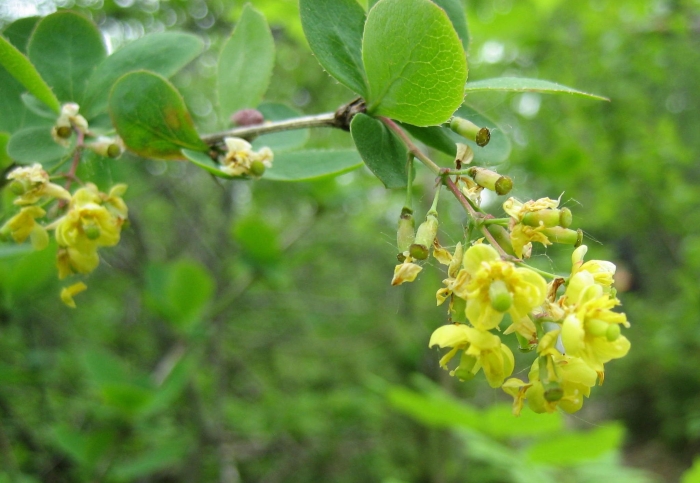Common Barberry
(Berberis vulgaris)
Common Barberry (Berberis vulgaris)
/
/

rboles
CC BY 4.0
Image By:
rboles
Recorded By:
Copyright:
CC BY 4.0
Copyright Notice:
Photo by: rboles | License Type: CC BY 4.0 | License URL: http://creativecommons.org/licenses/by/4.0/ | Rights Holder: rboles | Publisher: iNaturalist | Date Created: 2021-05-22T13:39:15-07:00 |


















Estimated Native Range
Summary
Berberis vulgaris, commonly known as common barberry, is a deciduous shrub native to a variety of habitats including scrub, woodlands, and hedgerows in central and southern Europe and the Caucasus region. It typically grows up to 13 feet (4 meters) in height and has a similar spread, featuring spiny branches with clusters of small, oval green leaves. The plant produces yellow flowers in late spring, which are followed by oblong, edible but sharply acidic red berries that persist into winter, providing visual interest and food for wildlife.
Common barberry is valued for its bright yellow flowers and red berries, which can be used to make jams and jellies. It is also appreciated for its ease of maintenance and tolerance of poor soils and drought conditions once established. In cultivation, it is used for hedging, as a barrier plant due to its thorns, and in wildlife gardens to attract birds. It prefers full sun to part shade and well-drained soils. While generally disease-resistant, it can be susceptible to rust diseases, which also affect cereal crops and can lead to its control or eradication in agricultural areas.CC BY-SA 4.0
Common barberry is valued for its bright yellow flowers and red berries, which can be used to make jams and jellies. It is also appreciated for its ease of maintenance and tolerance of poor soils and drought conditions once established. In cultivation, it is used for hedging, as a barrier plant due to its thorns, and in wildlife gardens to attract birds. It prefers full sun to part shade and well-drained soils. While generally disease-resistant, it can be susceptible to rust diseases, which also affect cereal crops and can lead to its control or eradication in agricultural areas.CC BY-SA 4.0
Plant Description
- Plant Type: Shrub
- Height: 4-6 feet
- Width: 4-6 feet
- Growth Rate: Moderate
- Flower Color: Yellow
- Flowering Season: Spring, Summer
- Leaf Retention: Deciduous
Growth Requirements
- Sun: Full Sun, Part Shade
- Water: Low, Medium
- Drainage: Medium, Slow
Common Uses
Bird Garden, Showy Flowers
Natural Habitat
native to a variety of habitats including scrub, woodlands, and hedgerows in central and southern Europe and the Caucasus region
Other Names
Common Names: European Barberry, Berbéris Vulgaire, Common Barberry
Scientific Names: , Berberis vulgaris, Berberis angulizans, Berberis bigelowii, Berberis calliobotrys, Berberis lycium, Berberis vulgaris f. vulgaris, Berberis vulgaris var. asperma, Berberis vulgaris var. purpurea, Berberis vulgaris var. purpurea
GBIF Accepted Name: